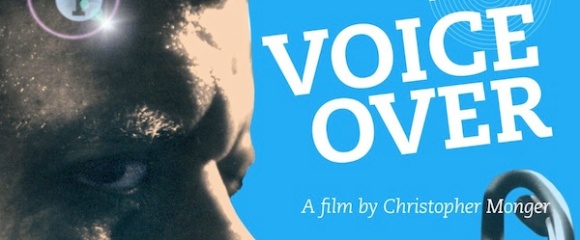
Does the fact that a film is about a misogynist make it a misogynistic film? That’s the question that plagued Voice Over director, Christopher Monger, on the film’s initial release and which helped hasten its relegation to relative obscurity.
Ian McNeice stars as “Fats” Bannerman, the writer of a radio drama for women set in the 19th Century which has attracted a loyal following, much to everyone’s amusement.
When he’s faced with some home truths about his show by a local journalist, before being taunted by two women whom he meets in a bar, Fats’ career starts to take a new direction. Then he stumbles upon one of the women in an alley, bloodied and bruised, and things go into freefall.
Shot on a miniscule budget in less than a month, Voice Over is a rough and ready piece of filmmaking with a terrific central performance from McNeice as a man with a seemingly violent past.
 Bemused by the opposite sex, Fats’ discovery of “Bitch” (Bish Nethercote) is never adequately explained, the viewer left to wonder if he did indeed find her post-attack or if he carried it out himself.
Bemused by the opposite sex, Fats’ discovery of “Bitch” (Bish Nethercote) is never adequately explained, the viewer left to wonder if he did indeed find her post-attack or if he carried it out himself.
Not having a reliable central character to relate to does leave the viewer detached from his plight, though that’s no slight on McNeice. In fact, Fats is the warmest character in a cast of vaguely sketched characters, his radio station colleagues required to do little more than react to situations.
The central “relationship” between Fats and Bitch is one of the oddest to be put on film, her silence juxtaposed by his inability to shut up. Fats’ decision to take on the role of guardian angel can equally be said to be an act of extreme cruelty towards a clearly damaged individual, but the film doesn’t make excuses for him and his descent is fascinating to watch, though hardly comfortable viewing.
Thirty years on from the controversies which dogged Voice Over’s Edinburgh International Film Festival debut, detailed at length in the liner notes, the film’s stance on misogyny can hopefully be put into perspective while the central drama still remains potent.
The transfer on this new Dual Format release may not be perfect but it’s the best we’re going to get thanks to issues with the original prints. Extras include two other Christopher Monger films, including 1976’s film noir homage, Repeater.
★★★★★









